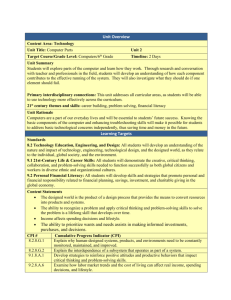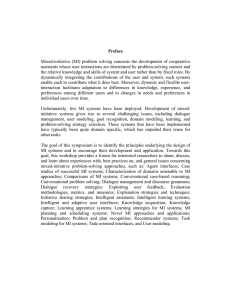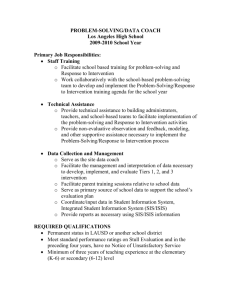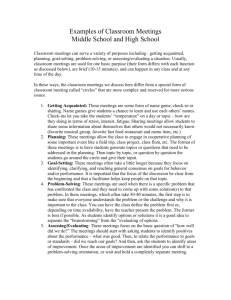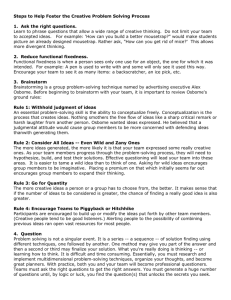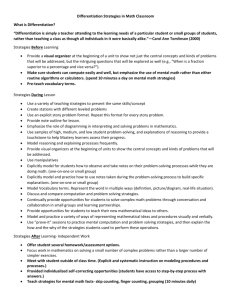Issues to discuss
advertisement
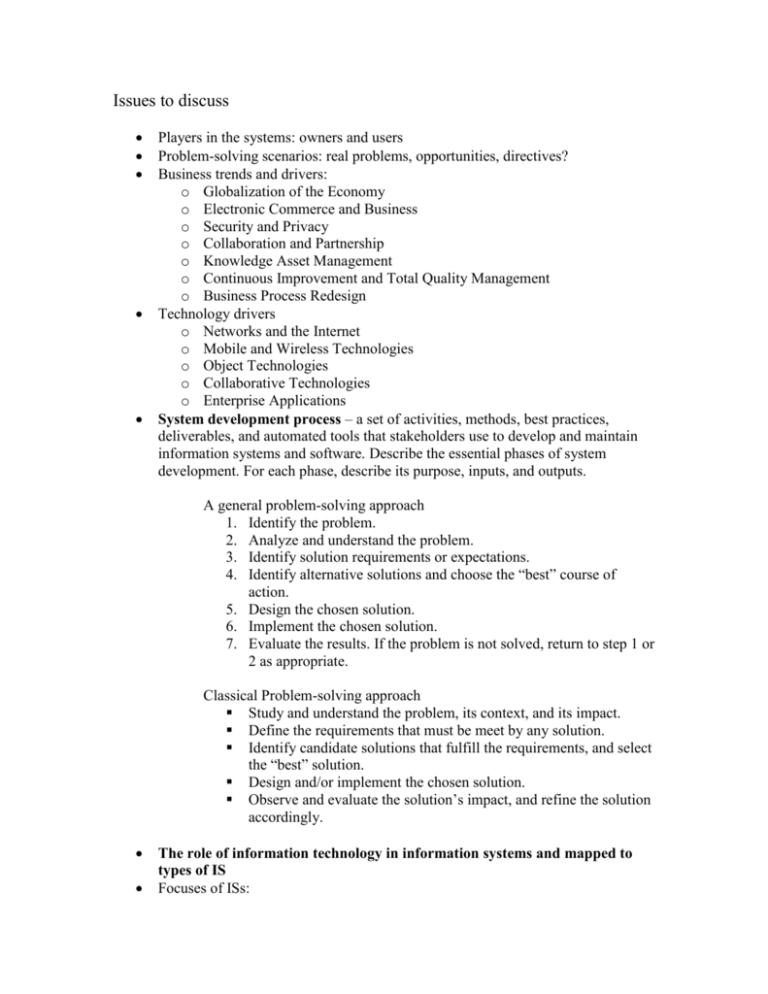
Issues to discuss Players in the systems: owners and users Problem-solving scenarios: real problems, opportunities, directives? Business trends and drivers: o Globalization of the Economy o Electronic Commerce and Business o Security and Privacy o Collaboration and Partnership o Knowledge Asset Management o Continuous Improvement and Total Quality Management o Business Process Redesign Technology drivers o Networks and the Internet o Mobile and Wireless Technologies o Object Technologies o Collaborative Technologies o Enterprise Applications System development process – a set of activities, methods, best practices, deliverables, and automated tools that stakeholders use to develop and maintain information systems and software. Describe the essential phases of system development. For each phase, describe its purpose, inputs, and outputs. A general problem-solving approach 1. Identify the problem. 2. Analyze and understand the problem. 3. Identify solution requirements or expectations. 4. Identify alternative solutions and choose the “best” course of action. 5. Design the chosen solution. 6. Implement the chosen solution. 7. Evaluate the results. If the problem is not solved, return to step 1 or 2 as appropriate. Classical Problem-solving approach Study and understand the problem, its context, and its impact. Define the requirements that must be meet by any solution. Identify candidate solutions that fulfill the requirements, and select the “best” solution. Design and/or implement the chosen solution. Observe and evaluate the solution’s impact, and refine the solution accordingly. The role of information technology in information systems and mapped to types of IS Focuses of ISs: o Data—the raw material used to create useful information. Business knowledge (owner) is the insight that is gained from timely, accurate, and relevant information Data requirements (users) are a representation of users’ data in terms of entities, attributes, relationships, and rules. Data requirements should be expressed in a format that is independent of the technology that can or will be used to store the data o Processes—the activities (including management) that carry out the mission of the business. System owners’ perspective Business functions are ongoing activities that support the business. Functions can be decomposed into other subfunctions and eventually into processes that do specific tasks. A cross-functional information system supports relevant business processes from several business functions without regard to traditional organizational boundaries such as divisions, departments, centers, and offices. System users’ perspectives Business processes are activities that respond to business events. Business processes are the “work” performed by the system. Process requirements are a representation of the users’ business processes in terms of activities, data flows, or work flow. A policy is a set of rules that govern a business process. A procedure is a step-by-step set of instructions and logic for accomplishing a business process. o Interfaces—how the system interfaces with its users and other information systems. System owners’ perspective System users’ perspectives Interface requirements are a representation of the users’ inputs and outputs. Define problems, opportunities, and directives—the triggers for systems development projects. Describe the PIECES framework for categorizing problems, opportunities, and directives. o Problem-solving framework P the need to improve performance I the need to improve information (and data) E the need to improve economics, control costs, or increase profits C the need to improve control or security E the need to improve efficiency of people and processes S the need to improve service to customers, suppliers, partners, employees, etc. Scope definition o Problem statement – a statement and categorization of problems, opportunities, and directives; may also include constraints and an initial vision for the solution. Synonyms include preliminary study and feasibility assessment. o o Constraint – any factor, limitation, or restraint that may limit a solution or the problem-solving process. o o Scope creep – a common phenomenon wherein the requirements and expectations of a project increase, often without regard to the impact on budget and schedule. o o Statement of work – a contract with management and the user community to develop or enhance an information system; defines vision, scope, constraints, high-level user requirements, schedule, and budget. Synonyms include project charter, project plan, and service-level agreement.




